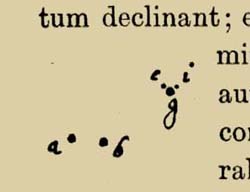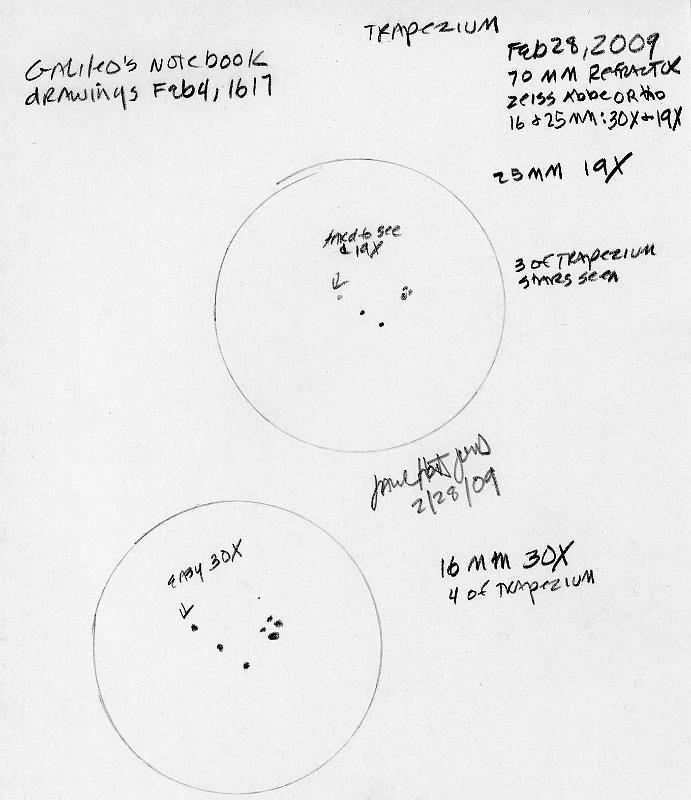Galileo’s observed the Trapezium stars in the sword of Orion on February 4, 1617. He labeled the three stars “c”, “g”, and “i”. These stars are known now as the “D”, “C” and “A” components of Theta 1 Orionis, or 41 Orionis. He did not see the fainter “B” component.
Galileo’s text states that the apparent spacing of stars “a” and “g”, as seen through his telescope, exactly matched the apparent spacing of two of the stars in Orion’s belt as seen with the unaided eye. This implies a power of 27 for his telescope.
This observing report from Galileo’s notebook is translated from the Latin: “The arrangement of fixed stars pictured here was discovered by me near the point of Orion’s sword, from which they arise toward the north and lean a bit to the east; and g and b appear equal in magnitude, a smaller really by little, but two, c, i, rather faint, scarcely a fourth or fifth part of g itself. Three, a, b, g, form a very obtuse angle. The lines through b, a, and through i, c, are almost parallel, but will [eventually] meet [in a direction] towards c, a. Two, c, i, are equidistant from g, which they practically touch. The distance between a and b is adjudged three semidiameters of Jupiter, to which the distance b-g seems triple. These things were observed by me the fourth day of February 1617 at Bellosguardo.”
I sketched the Trapezium using my 70mm Televue Ranger and two eyepieces — my 25mm Zeiss Abbe for a 19x and 16mm Zeiss Abbe for 30x magnified view. At 19x I had difficulty seeing the B or faintest component of the trapezium stars. But when I upped the magnification to 30x I could see all four stars easily.
Here is an astrophoto of M42, the Orion nebula, showing the Trapezium stars. It was taken by my hubby Morris Jones.
Here is Charles Messier’s sketch of M42 and the Trapezium stars
Here is a huge list of links, references and additional information about Galileo’s observations.

